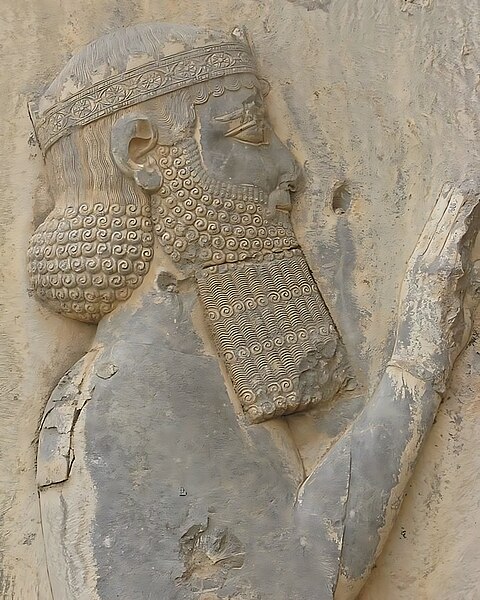Ecbatana was an ancient city and the capital of the Median Empire, making it the first capital of Iran. It later became the summer capital of the Achaemenid and Parthian Empires. It was also an important city during the Seleucid and Sasanian empires. It is believed that Ecbatana is located in the Zagros Mountains, the east of central Mesopotamia, on Hagmatana Hill. Ecbatana's strategic location and resources probably made it a popular site even before the 1st millennium BC. Along with Athens in Greece, Rome in Italy and Susa in Khuzestan, Ecbatana is one of the few ancient cities in the world that is still alive and important, representing the current-day Hamadan.
Ecbatana
Golden rhyton of ram's head, Median Empire, discovered in Ecbatana, kept at the Reza Abbasi Museum.
Achaemenid golden rhyton in the shape of a lion, from Ecbatana, kept at the National Museum of Iran.
Coin of Demetrius I, minted and discovered in Ecbatana.
Darius I, commonly known as Darius the Great, was a Persian ruler who served as the third King of Kings of the Achaemenid Empire, reigning from 522 BCE until his death in 486 BCE. He ruled the empire at its territorial peak, when it included much of Western Asia, parts of the Balkans and the Caucasus, most of the Black Sea's coastal regions, Central Asia, the Indus Valley in the far east, and portions of North Africa and Northeast Africa including Egypt (Mudrâya), eastern Libya, and coastal Sudan.
The relief stone of Darius the Great in the Behistun Inscription
Gold foundation tablets of Darius I for the Apadana Palace, in their original stone box. The Apadana coin hoard had been deposited underneath (c. 510 BCE).
One of the two gold deposition plates. Two more were in silver. They all had the same trilingual inscription (DPh inscription).
"Gaumata" being trampled upon by Darius the Great, Behistun inscription. The Old Persian inscription reads "This is Gaumâta, the Magian. He lied, saying "I am Smerdis, the son of Cyrus, I am king"."








